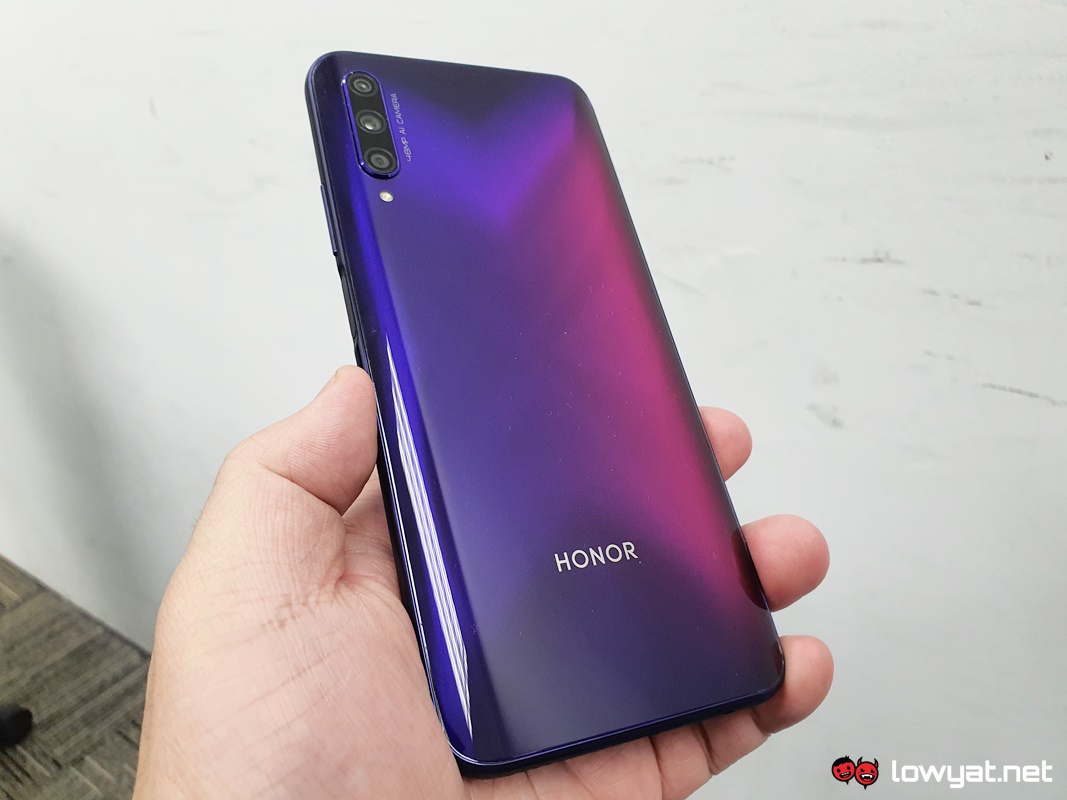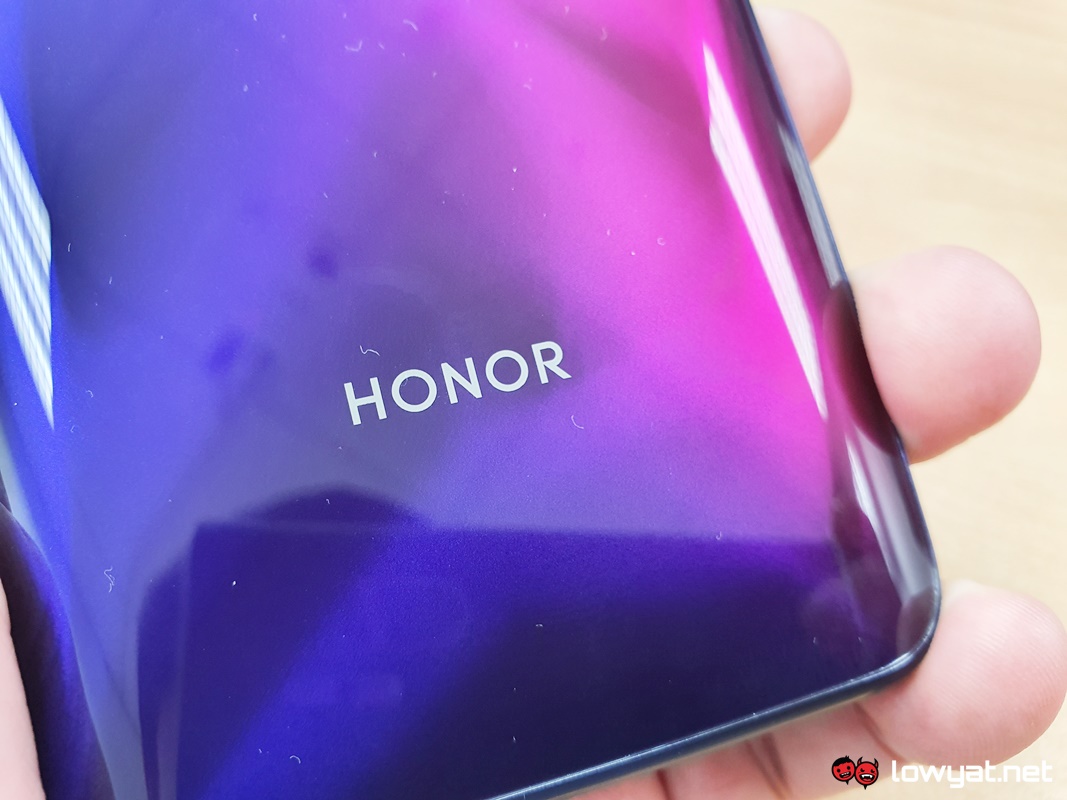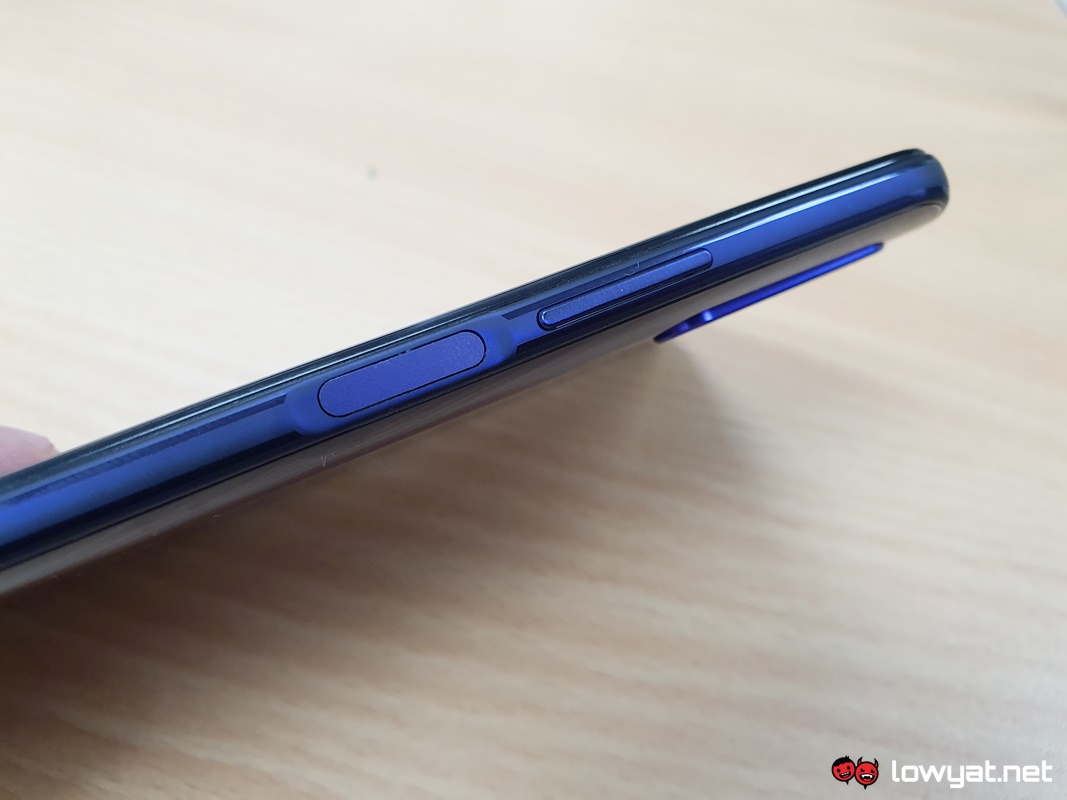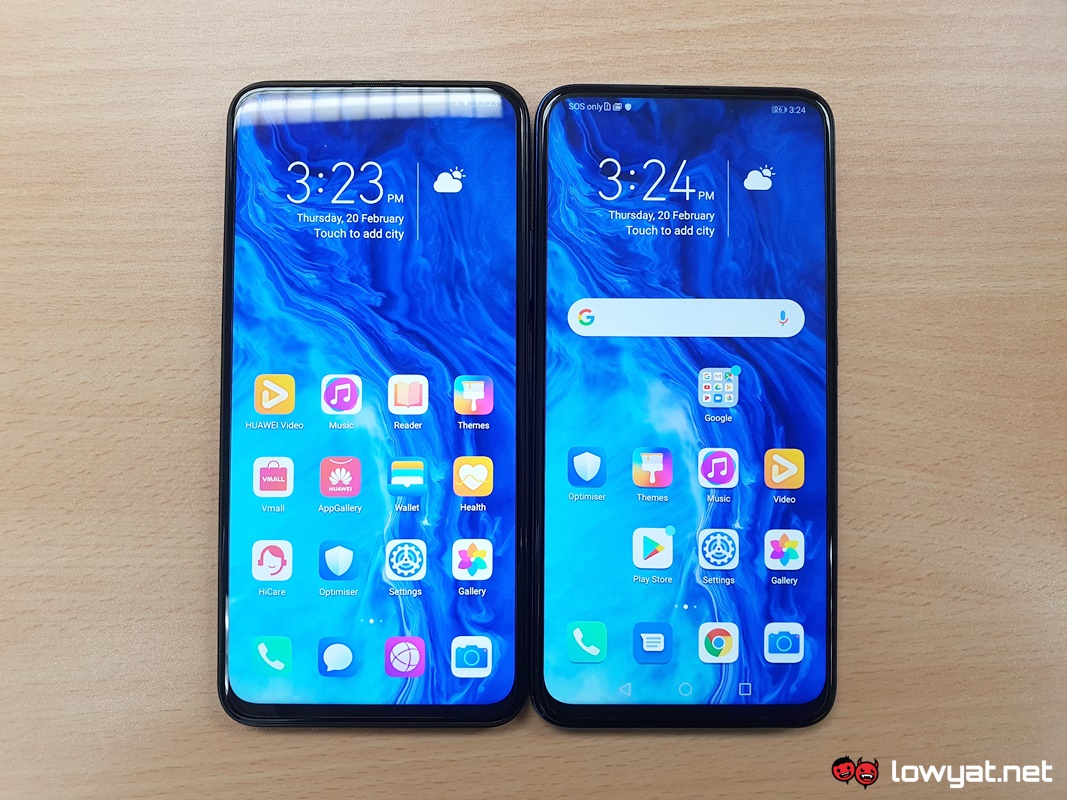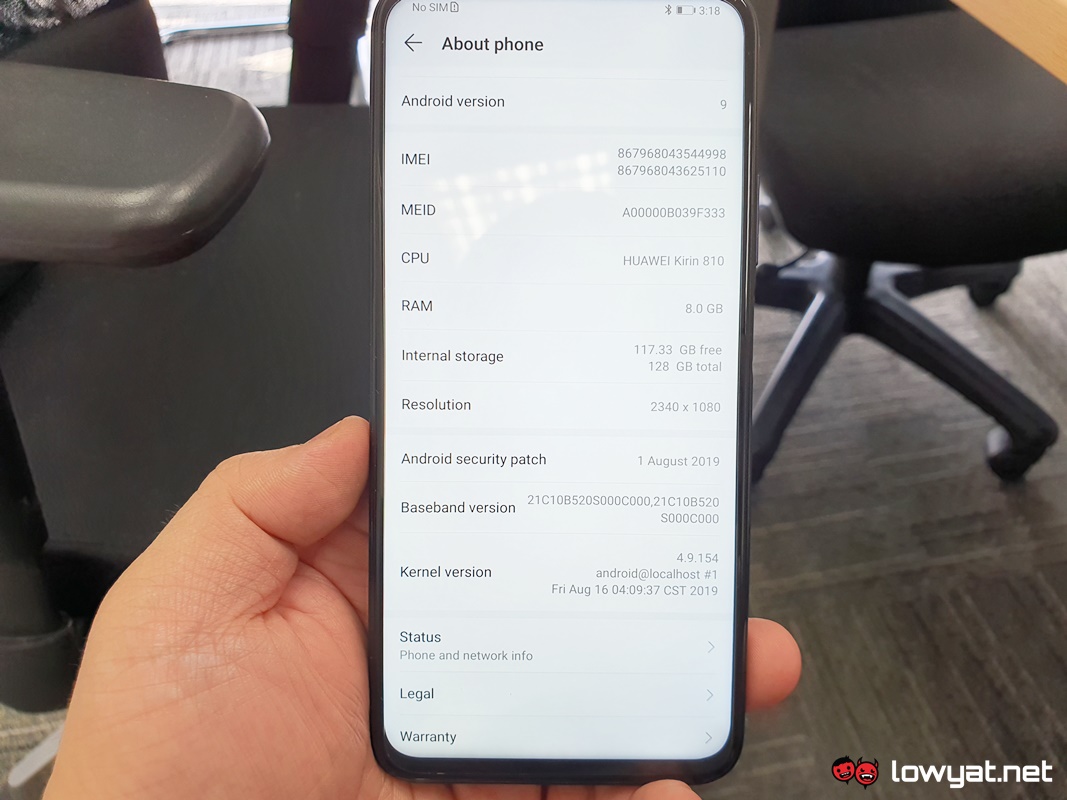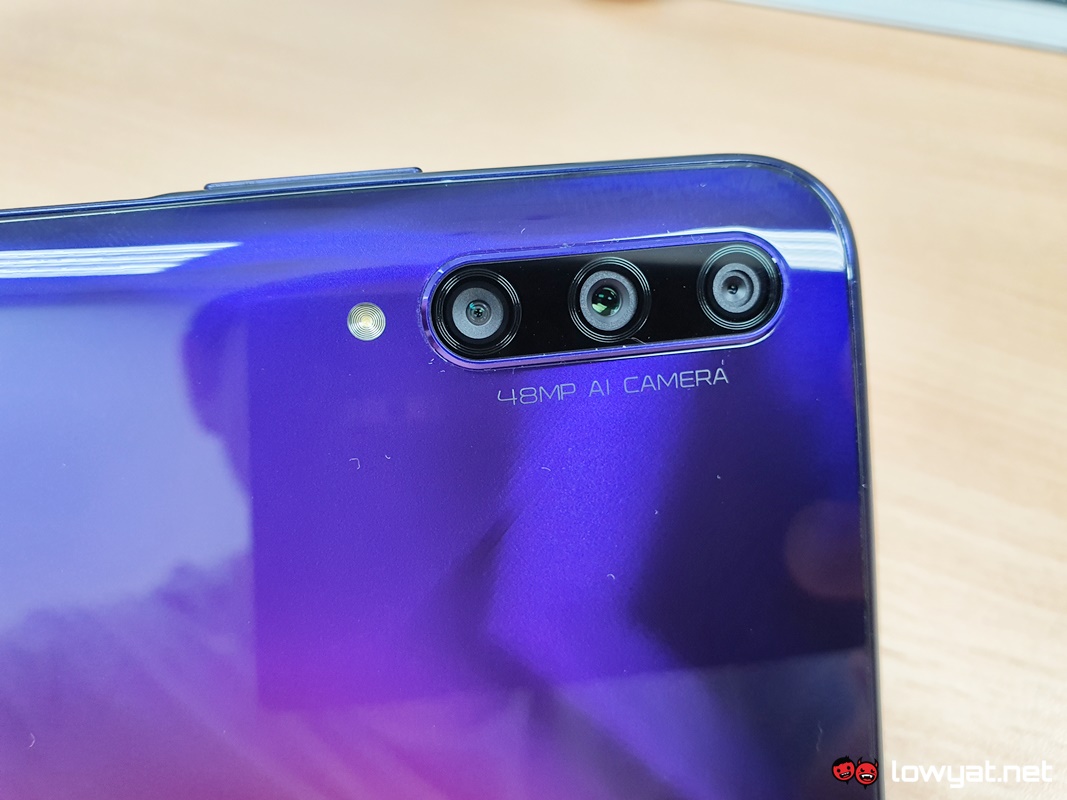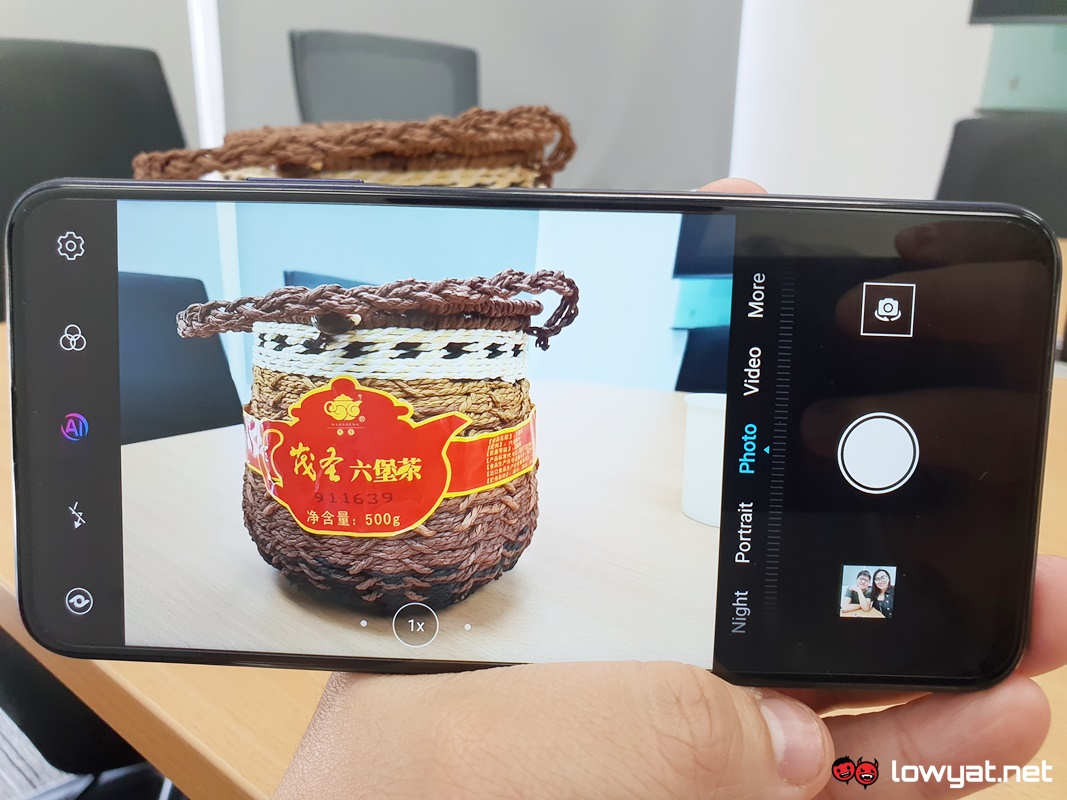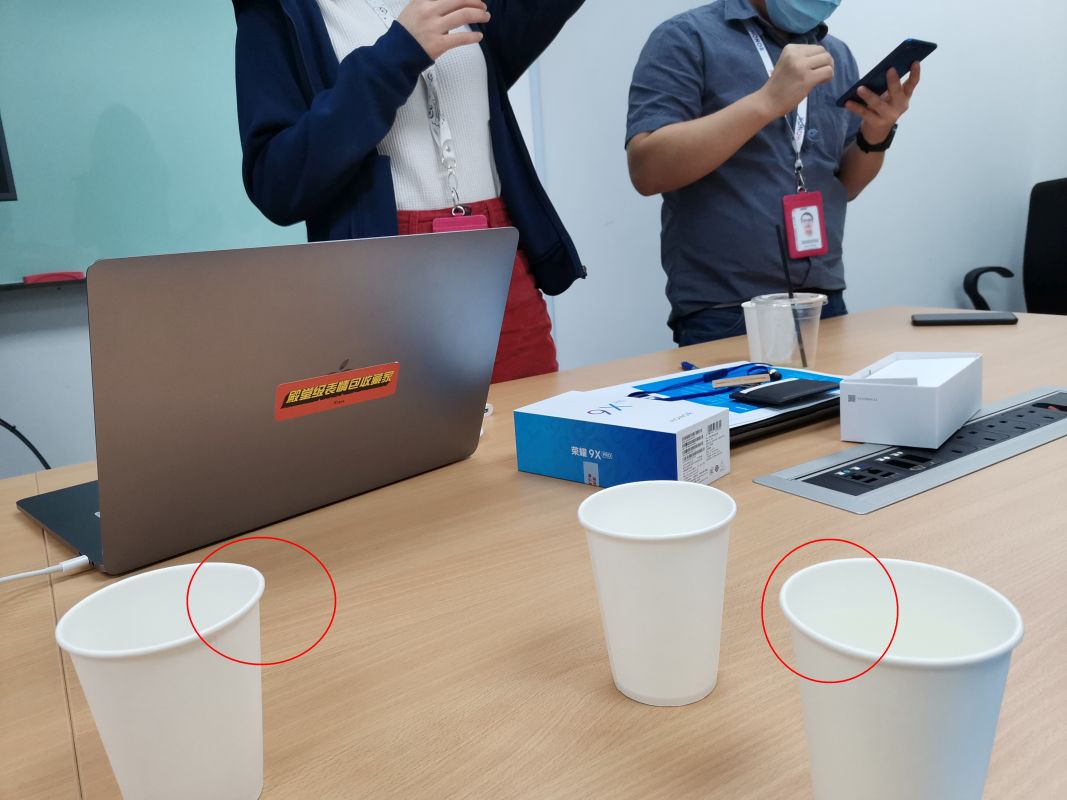Nearly a year after its launch, the phone is very nearly here in Malaysia and we got a chance to lay out hands on it. Let’s start with the shape and design of the HONOR 9X Pro. In all honesty, the phone is identical to the HONOR 9X, save for a couple of things. For a start, the phones comes with a side mounted fingerprint sensor, which also serves as its power button. Second, that three dimensional, dynamic “X” pattern looks more pronounced than its non-Pro sibling.
On that note, it should be noted that HONOR is only bringing in the model with the Phantom Purple colour scheme and not the Midnight Black version. Even its 5.69-inch Full HD+ display is identical to the HONOR 9X and even employs the same mechanised pop-up selfie camera that’s nestled at the top of the phone.
Aesthetics aside, let’s move on to the internals of the HONOR 9X Pro. Unlike the HONOR 9X, the phone runs on the more power-efficient and more powerful 7nm Kirin 810 SoC, has 6GB RAM, and 256GB of expandable storage. The bad news is, because the Kirin 810 is one of several Huawei components on the US’ ban list, the HONOR 9X Pro is the brand’s first smartphone to ship out without the much venerated Google Mobile Services (GMS), and the first roll out with Huawei Mobile Services (HMS).
The absence of GMS being a shame and notwithstanding, just having the Kirin 810 inside the HONOR 9X Pro makes a difference; interactions felt smoother, apps load faster, and even browsing through the internet felt snappy. Then there’s the HONOR 9X Pro’s main triple camera module and its 48MP sensor. According to the brand, one key difference between the HONOR 9X Pro and its non-Pro brethren is the NPU (Neural Processing Unit) that comes with the Kirin 810. Saying that this enables the main camera to retain more detail when taking pictures, as well as reducing noise.
Sadly, that wasn’t what I saw during my brief session with it. In the few pictures I captured with the phone, I found one pretty major flaw with the phone: image distortion. Specifically, the image distortion seems centre-focused, which means that many subjects in the picture look as if their edges were being pulled – sucked in, even – to the middle. I would like to tell you that this is unnoticeable to the untrained eye, but the fact is that it is a rather glaring issue. At the time of writing, the product testing engineer that was present tells me that it the distortion issue could be software-based and that he would look into it. Hopefully, by then, HONOR will have rectified the issue before its yet undetermined launch in Malaysia.
